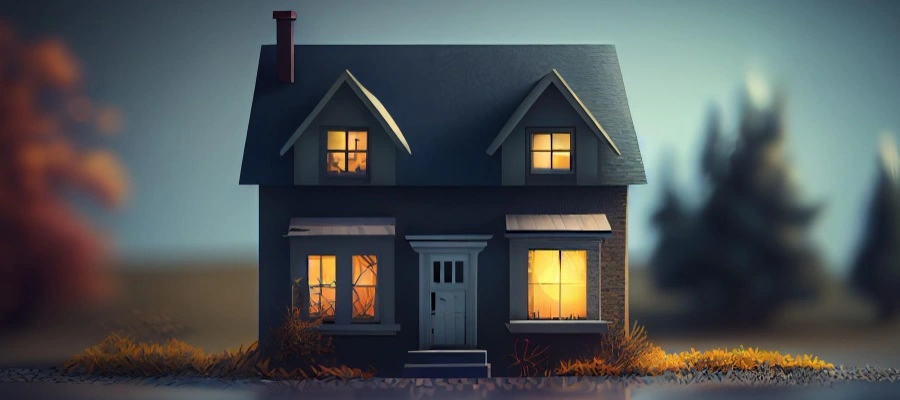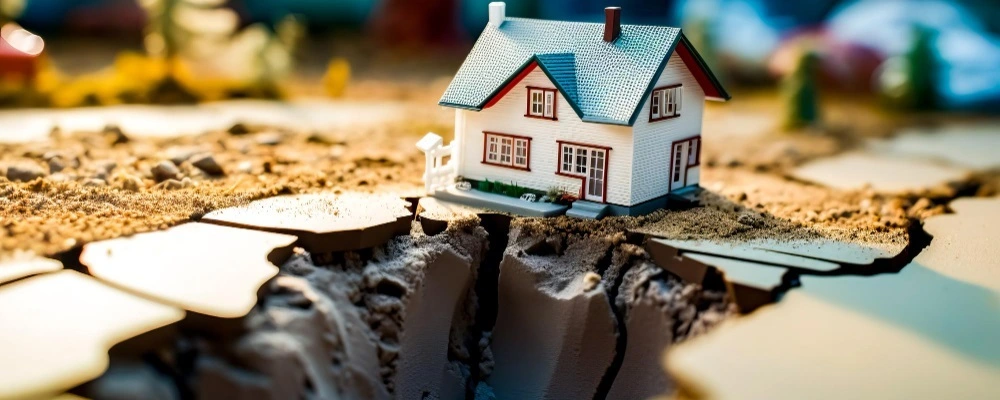Earthquakes do not come with a warning sign; they come and rip up the roots of buildings. Various areas of India are prone to earthquakes. A house that does not comply with the Indian seismic codes and is not designed properly can be prone to lethal damage from the movement of the tectonic plates.
So, how can you build an earthquake-resistant house or protect your building from the risk of earthquakes? You need to build an earthquake-resistant house. Earthquake-resistant construction techniques strengthen the foundation of the house, making it ready for any changes in the ground.
What factors should we consider when building an earthquake-proof home? Keep reading as we have compiled factors for an earthquake-resistant house.
Importance of an Earthquake-Resistant House
The two most common types of construction in a building are load-bearing wall structures and framed structures. The load-bearing wall structure is designed to support floors at different levels with continuous vertical walls. In the framework structure, isolated vertical posts (columns) are connected to horizontal beams to support the structure’s construction.
Earthquake Survival: How Does a Building Do It?
The critical elements of maintaining a building are relatively well understood. Three crucial attributes determine a structure’s ability to resist an earthquake. Here are the top elements that ensure a building’s survival.
Stiffness
Seismic activity forces the walls of a building to experience extreme shear and racking forces. Even though a wall is designed to resist gravity alone, the load it has to bear is extremely hard for it to handle. A properly constructed wall may not effectively transfer the force of the shaking to the foundation if it is not properly attached. Adding steel reinforcement bars to the wall’s foundation is crucial to its stiffness.
Ductility
Third, the material should be ductile, or it should be able to bend without breaking. The wall must be able to bounce back from the violent forces of the earthquake. The example of concrete is a great one. When pushed together, concrete is not ductile, even though it is extremely strong when compressed.
Factors for Earthquake-Resistant Houses

Various factors go into building a seismic safe house. Taking the right step at the right time allows you to build earthquake-resistant buildings. Here are the leading factors to consider while developing earthquake-resistant houses:
1. Identify the location
Location plays an important role in building houses, so choosing the best location for your home is crucial. The National Center for Seismology has identified five seismic zones based on the intensity of earthquakes. Before building the house, it is ideal to do research and determine whether the land you are going for is earthquake-prone.
2. Soil Quality
After selecting a location for your home, the next step is soil testing for quality. Good soil quality is primarily important for the foundation of your house because earthquake pressure can damage it.
The best soil contains coarse particles like argillaceous sand, sand gravel, and consolidated soil. Due to their hardness, compactness, and natural characteristics, it is suitable for seismic-resistant structures. Whenever possible, stay away from sandy, loose, and clay-type soils, as these soils are unsuitable for construction.
3. Height of the Structure
There is a strong correlation between a building’s number of floors and height and the load the foundation and soil will bear. For this reason, it is essential to properly calculate the load before designing and planning a structure so that your building can withstand an earthquake or another natural disaster.
Engineering plans and designs for buildings are based on a “design spectrum” and take inertial forces into account, as a building’s height determines its foundation’s type and depth.
4. Foundation of the Building
A building’s foundation is certainly the most crucial element, particularly if it is earthquake-resistant. The foundation allows the building’s charges and weights to be carried and distributed to the nearby land, preventing damage.
The size, structure, and characteristics of the foundation will differ depending on the terrain conditions and any adjustments that need to be made. A flexible pad of steel, rubber, or lead should be placed underneath the foundation to prevent the structure from moving during an earthquake.
5. Selection of the Building Materials
Choosing earthquake-resistant materials to build a house is a crucial factor in building an earthquake-resistant home. That is why it is important to choose a top construction company like Brick & Bolt, which utilizes earthquake-resistant materials that can absorb seismic energy during an earthquake to ensure that your building remains safe. In addition, you can calculate your home construction cost using their house construction cost calculator.
Some materials like reinforced steel and concrete are a perfect combination because they are strong, resistant, and extremely flexible at the same time. The materials should be tested mechanically to determine their ability to withstand seismic activity.
6. Load Distribution of the Building
Building structures should be symmetrical to ensure proper load distribution across their foundations and maintain constant balance. With a perfect understanding of load forces, real estate developers can design visually appealing structures without compromising their foundations’ stability.
Conclusion
By following these key factors you can make sure earthquake-proof house. In addition, significant technical expertise is required to build an earthquake-resistant building. But you do not need to worry. Brick & Bolt, a leading construction company, provides modern living spaces and earthquake-resistant buildings. We have a team of the best real estate developers who build buildings with high-quality materials that can endure even the most extreme earthquakes. Contact us today and give an edge to modern building design.

